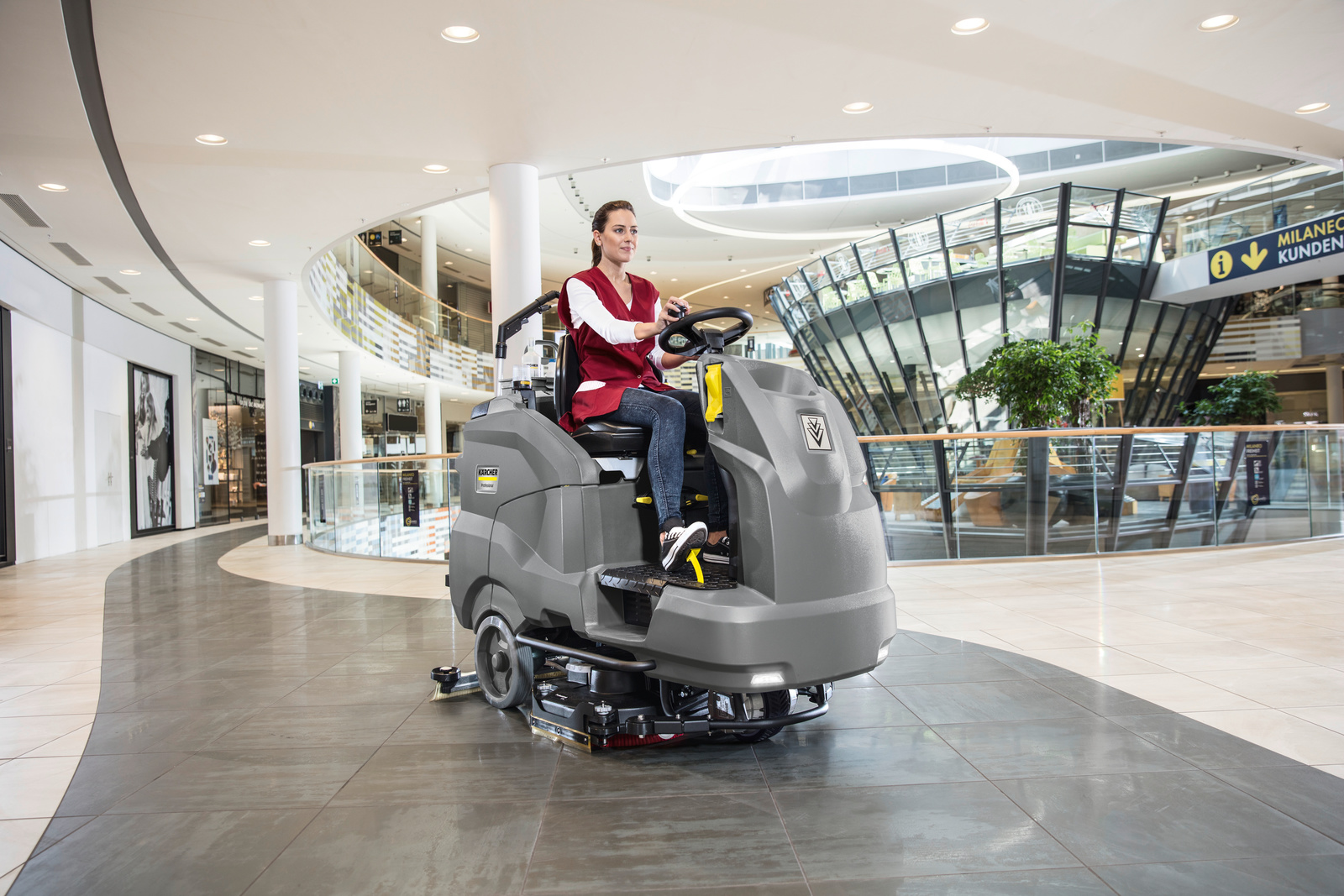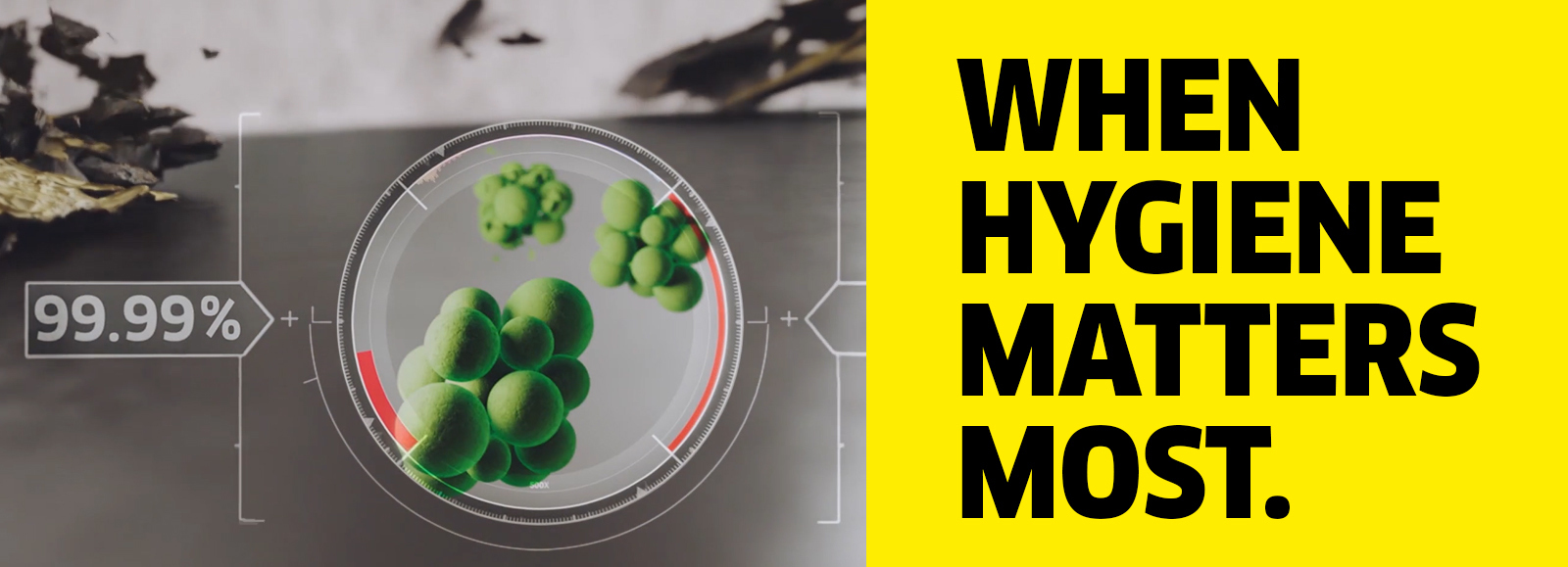Floor cleaning: mechanical cleaning and disinfection with Scrubber Dryers
For cleaning of hard and resilient floor coverings, scrubber dryers are used in addition to manual cleaning equipment. These machines can wet scrub and vacuum in a single pass. This way, work is carried out both hygienically and efficiently.
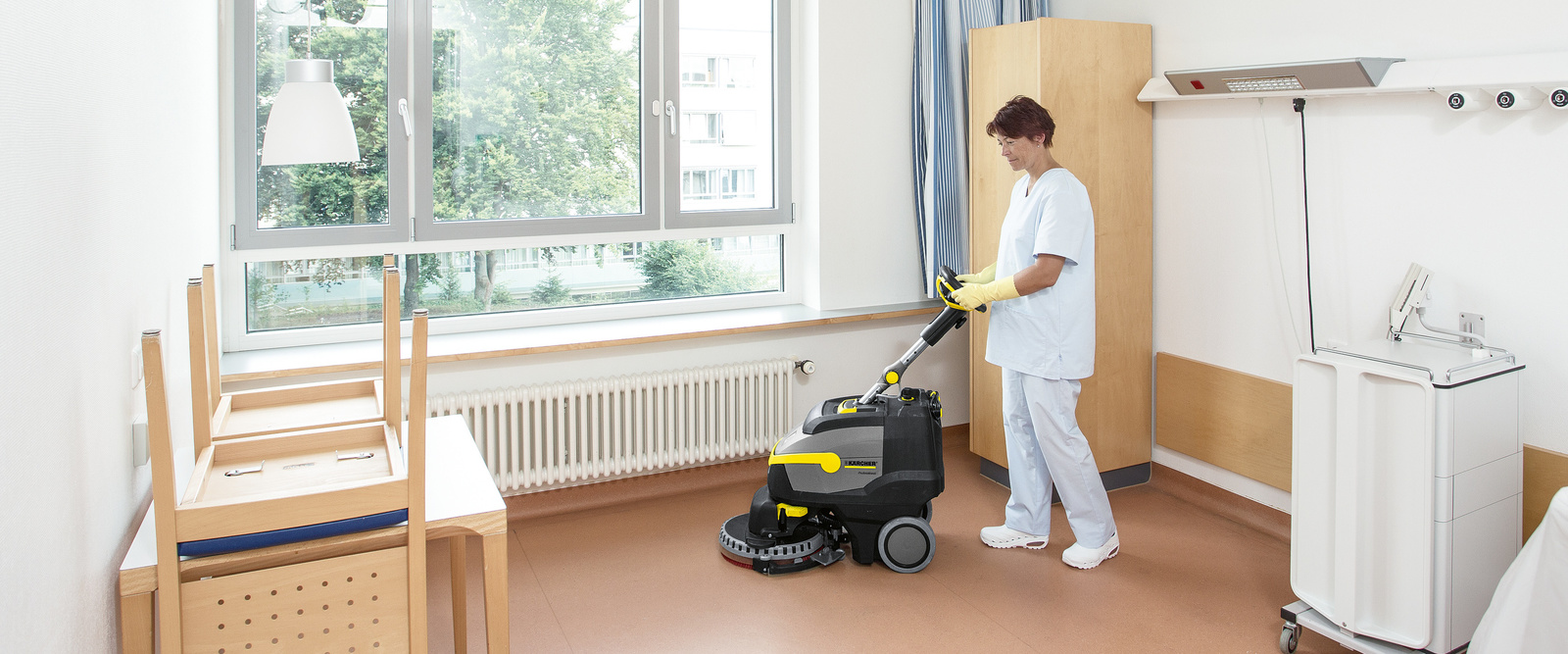
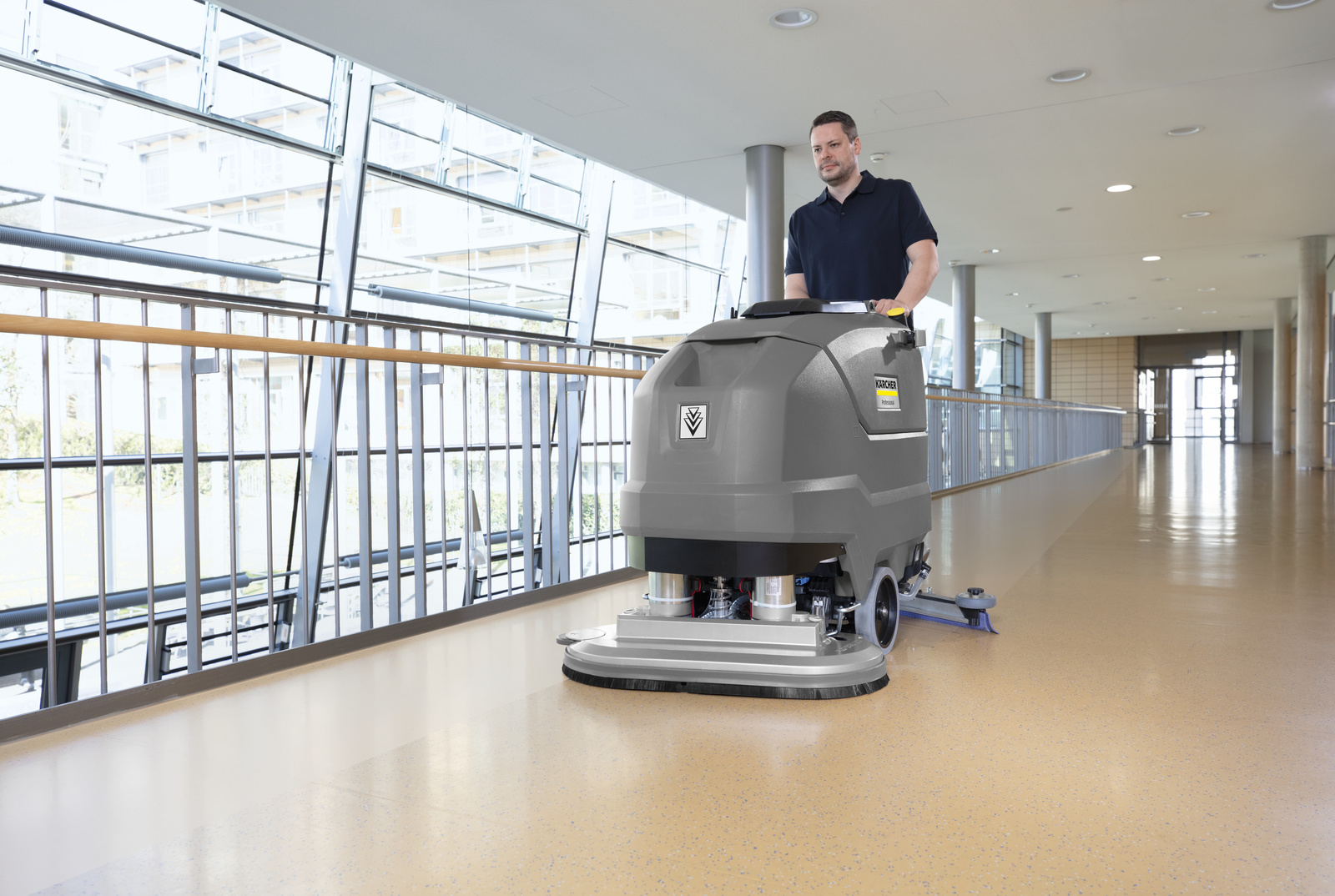
Advantages of mechanical cleaning
The advantage of mechanical cleaning over manual cleaning is that floors are cleaned and vacuumed in a single pass. this removes dirt and germs which cannot accumulate in a manual cleaning cloth or mop.
The risk of contamination via hands is also reduced by contact-free cleaning. The use of scrubber dryers also increases efficiency: Thanks to the higher area output, a larger area can be cleaned in a shorter time.
A further advantage: Detergent can be added precisely in the correct quantity thanks to dosing systems.
In addition, scrubber dryers apply a much higher contact pressure to the surface to be cleaned. This also increases the cleaning performance compared to a mop.
Use of cleaning agents - acidic or alkaline?
It is recommended to change between acidic and alkaline foam cleaning products, so that microorganisms cannot adapt and do not develop resistance. The same applies to disinfectants.
In addition, acids counteract the build-up of inorganic deposits such as lime. Here an alkaline cleaning agent is not sufficient. Organic soiling is dissolved well by alkaline cleaning agents. This is important, because deposits are particularly good adhesion bases for bacteria and viruses.
When using acidic cleaning agents, please note that tile joints may have to be watered beforehand. This prevents them from absorbing the acid and being damaged.
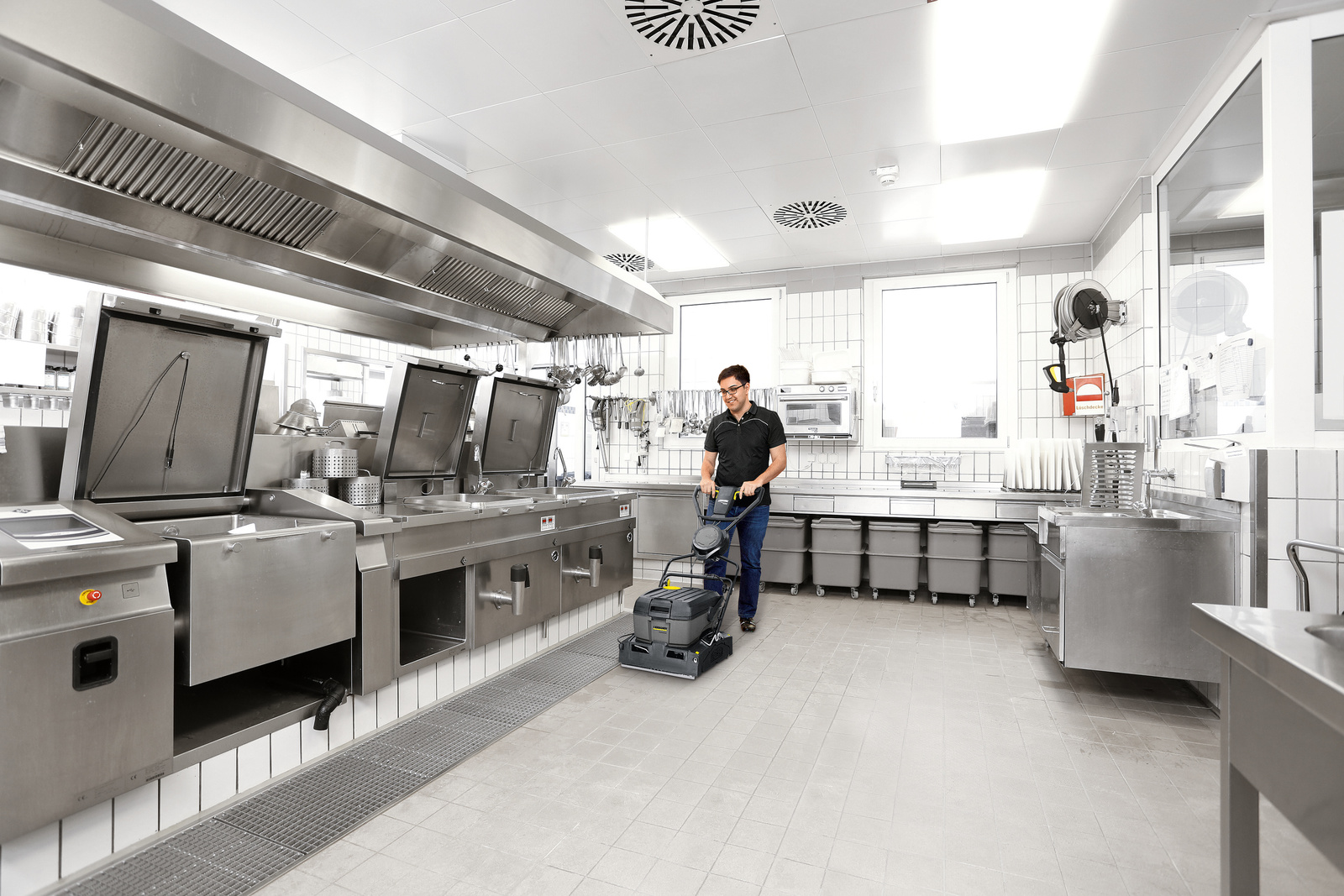
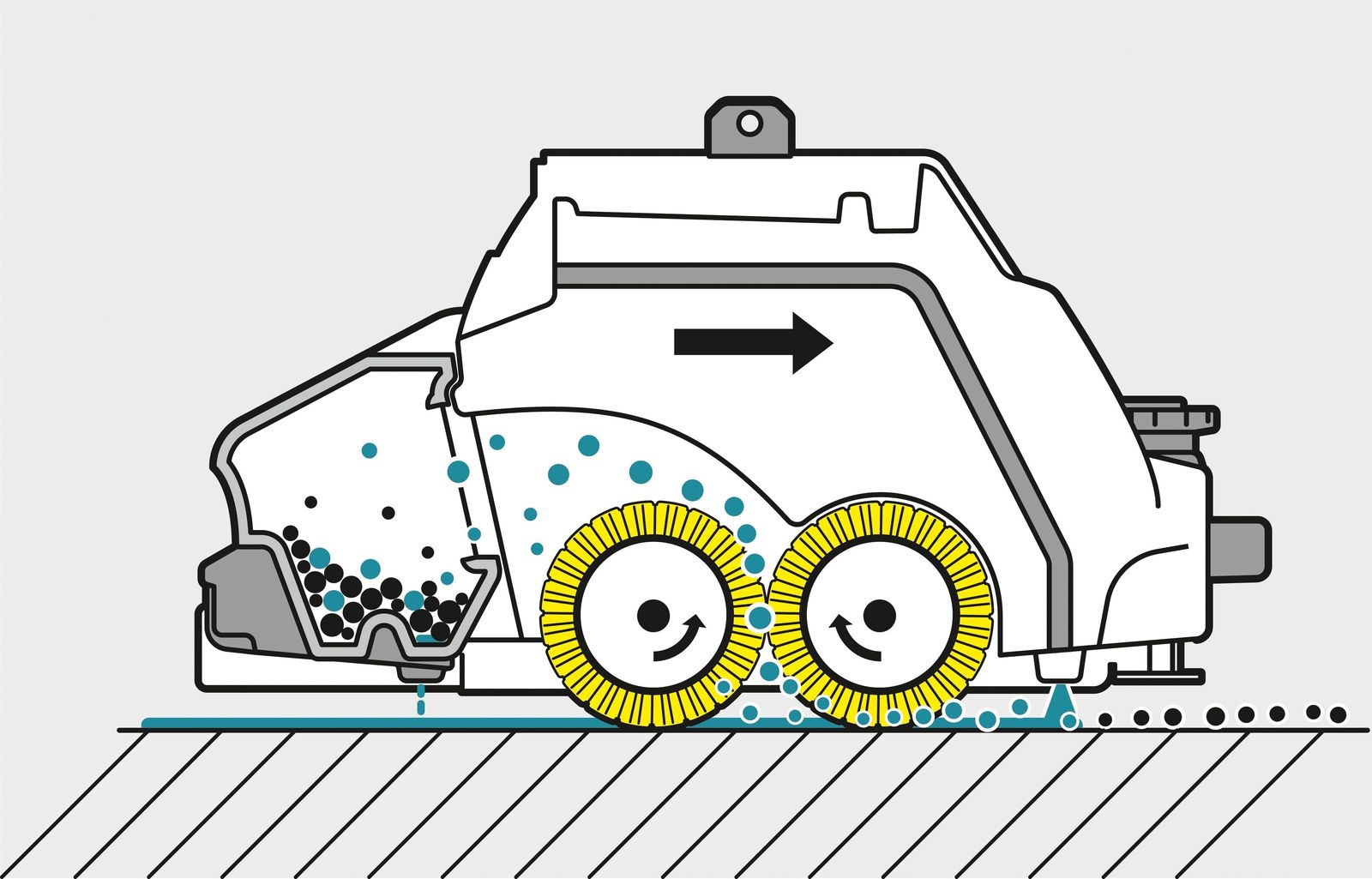
Special challenge: structured floor coverings
Textured floor coverings are more difficult to clean with manual cleaning systems such as wipers and mops. The problem is that when using manual cleaning methods, dirt and detergent or protective product residues can only be superficially wiped off the surface tiles, as mops and cloths do not get into the joints. On the one hand, these residues look unattractive and on the other hand they provide a breeding ground for bacteria.
This problem can be avoided by using Scrubber Dryers with roller brush technology, as these use soft brushes to reach into the structure and loosen the dirt that is then being vacuumed off. Another advantage of roller brushes is that even coarser dirt particles are swept up and the step of pre-sweeping is saved.
Disinfection of floors with scrubber dryers
Scrubber Dryers can be used for the disinfection of floors. It is important to follow both the correct chemical dosage and the exact application time, according to the manufacturer's specifications. For chemical disinfection of the coronavirus, according to the Robert Koch Institute, agents with the range of action "limited virucidal" (effective against enveloped viruses), "limited virucidal PLUS" or "virucidal" must be used (source: rki.de).
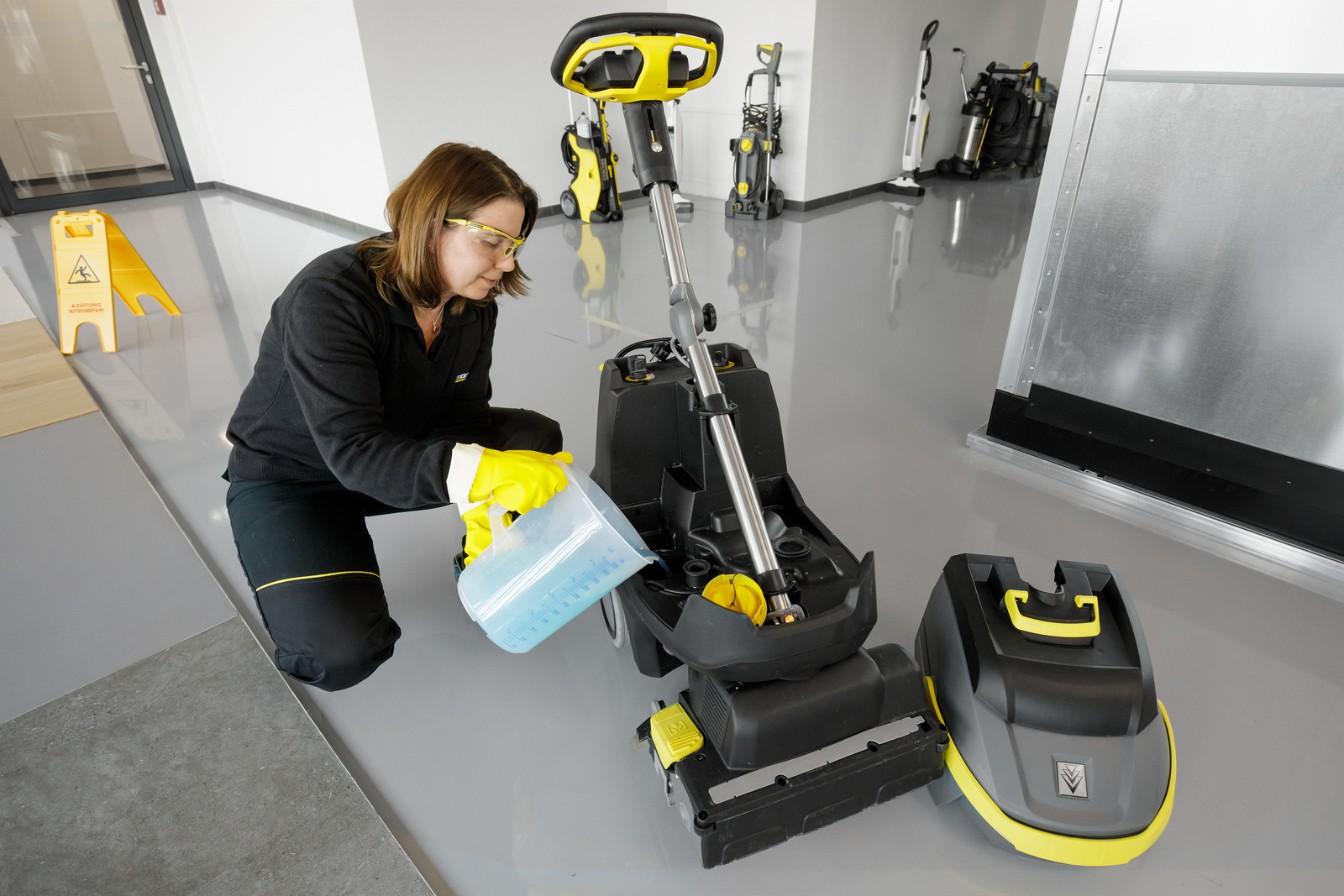
The correct dosage
The two best ways to achieve the correct dosage are:
- via automatic dosage in a de-centralised disinfectant dosing unit, for example in the equipment room, or,
- in a measuring cup to the correct ratio of disinfectant to water.
The disinfectant solution is then poured into the fresh water tank of the Scrubber Dryer. Dosing systems built into Scrubber Dryers are not suitable for this purpose
Procedure for the mechanical disinfection of floors
For successful disinfection, sufficient active ingredient must reach the floor surface. In order to achieve this, the flow rate should be selected according to the floor covering so that an even wetting is produced. It is helpful to use microfibre textiles or a material pad - brushes are less suitable for this.
In order to achieve the required reaction time, it is essential to work in the one-step method - i.e. without suction. The disinfectant solution is simply applied to the floor with the Scrubber Dryer. Then the surface is allowed to dry.
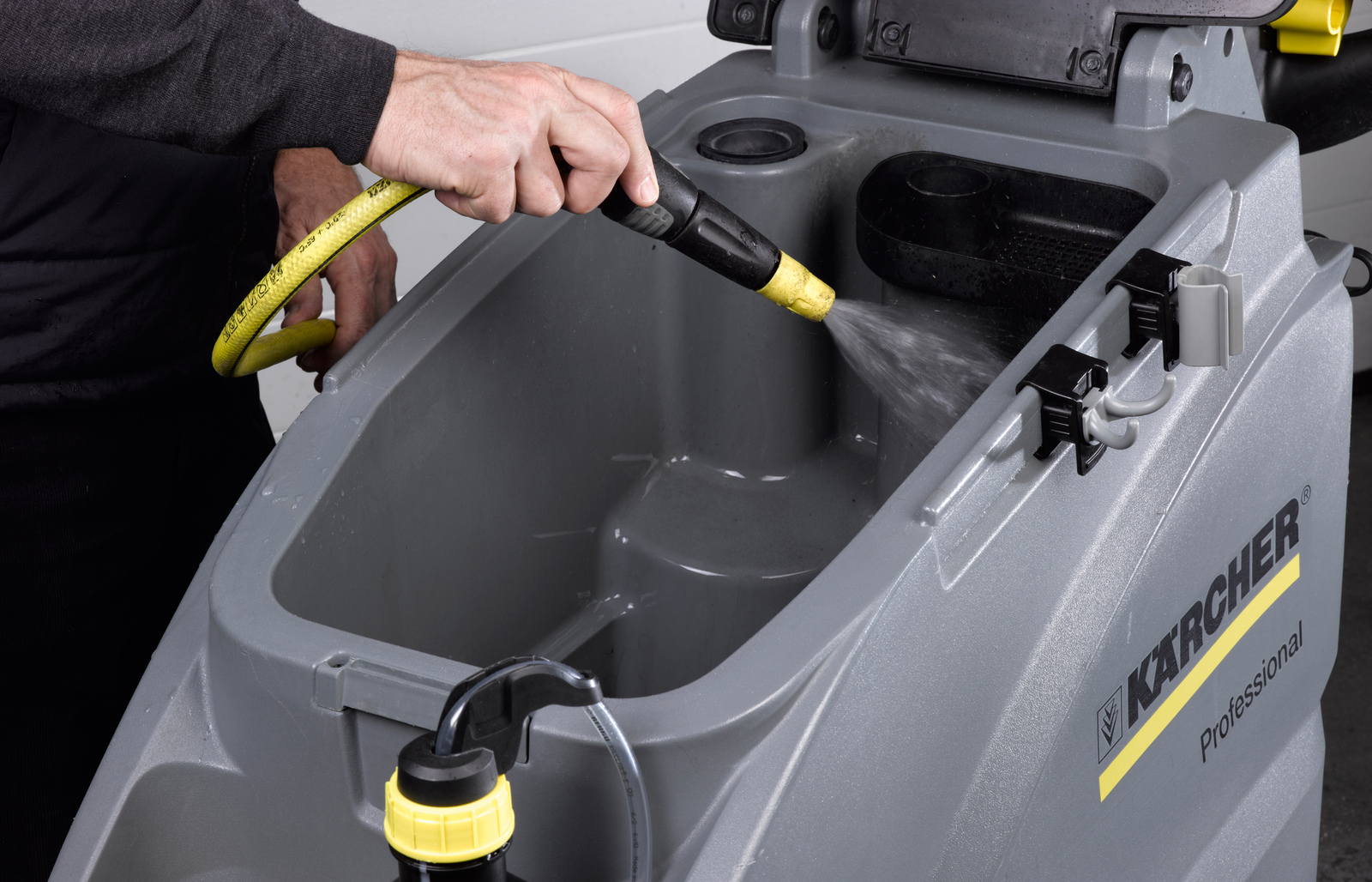
After using the Scrubber Dryer
The Scrubber Dryer must be thoroughly cleaned or disinfected after the disinfection activity is completed. In addition, the excess disinfectant solution must be drained from the fresh water tank to prevent the machine from becoming contaminated.
Ideally, the fresh water cover, fresh water drain cover and the dirty water cover should remain open after dismantling to speed up drying.
Cleaning and disinfection according to HACCP (Hazard Analysis Critical Control Point)
In particularly hygiene-sensitive areas such as hospitals or kitchens, the premises and existing equipment must be kept clean by careful cleaning and, if necessary, disinfecting. Since different areas and objects have different cleaning intervals, a cleaning plan must be designed and visibly hung up in the respective area that is to be cleaned. This plan has to show in detail:
- what (equipment, surfaces, floors),
- when (after use, daily, weekly),
- with what (detergent and dosage)
- and by whom (responsible employee)
it is to be cleaned.
Completed work must be precisely recorded and documented by signature in a comprehensible way to enable controlling. It should be noted that cleaning and disinfection are two different processes. Cleaning aims to remove contamination, i.e. any undesirable substance including product residue, micro-organisms, detergent and disinfectant residue. Thorough cleaning has been proven to remove over 90% of microorganisms and germs from surfaces.
Disinfection involves chemical and physical processes to kill micro-organisms to a level that is neither harmful to health nor impairs the quality of food.
